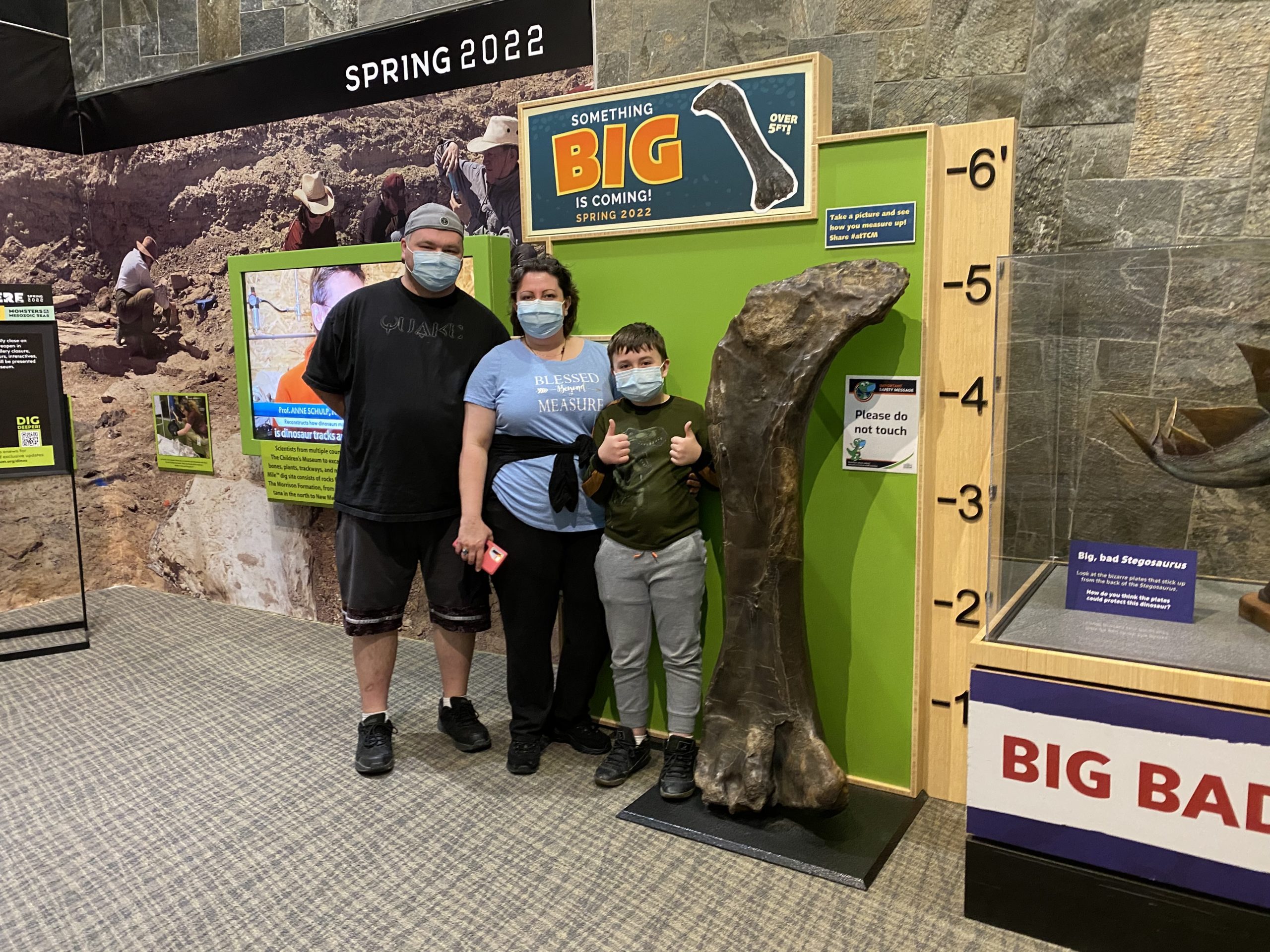Something big, really big, is coming! That something is more than 65-feet-long. It has a neck that is as long as a giraffe is tall, and feet that look like those of an elephant. Yet, kids aren’t afraid. They are fascinated by huge dinosaurs from the Jurassic Period and often wish they could slide down them from head to toe like they did in Flintstone cartoons.
Two giants of the Jurassic are being installed at The Children’s Museum right now. They may not have had sharp teeth or claws like a T. rex, but that doesn’t mean these dinos weren’t a threat. ”Their size alone was often enough to make a predator think twice before attacking them,” says Laura Rooney, paleontologist at The Children’s Museum of Indianapolis. “These dinosaurs really show off the extreme of how big a land animal can get, and it helps us understand just how amazing and diverse life is on this planet.”
The Jurassic Giants are some of the biggest animals to ever walk the earth, but they didn’t start out that way. Kids will get to see how baby Sauropods grew super-fast even though they only ate plants. It turns out the long necks of these dinosaurs helped them reach high and low to discover a wider variety of foliage and plant life. Add specialized skulls and teeth adapted to strip leaves off plants, and they were eating machines capable of devouring mass quantities of greenery.
Predators like Allosauruses would usually hunt the small or weaker Sauropods, which might be why they traveled in herds — to protect vulnerable ones. “Seeing the actual fossils on display within images of their environment gives visitors context and helps children understand that these aren’t sculptures of fantasy creatures from our imagination,” Rooney says. “These were once living, breathing animals.”
Scientists have all kinds of hypotheses regarding what they may have used their long, powerful and flexible tails for such as defense against predators, communication or keeping track of the herd. It is one of the many questions our paleontologists are trying to answer based on clues left behind in fossil material. And, it’s a question to ask your kids while letting them know scientists don’t yet have all the answers for everything, and that’s OK.
Families will be able to swivel sections of limb bones under a camera to determine how old the dinosaur lived to be. You can figure it out by counting rings in the bone just as you might count the rings of a cross section of a tree to figure out age.
Scientists in the Paleo Prep Labs can help you arrive at your own conclusions based on clues regarding the weight of a dinosaur, whether it walked on all fours or two feet, and even what dino poop (coprolite) can tell you.
The all-new Dinosphere is set to reopen at The Children’s Museum of Indianapolis in March!








